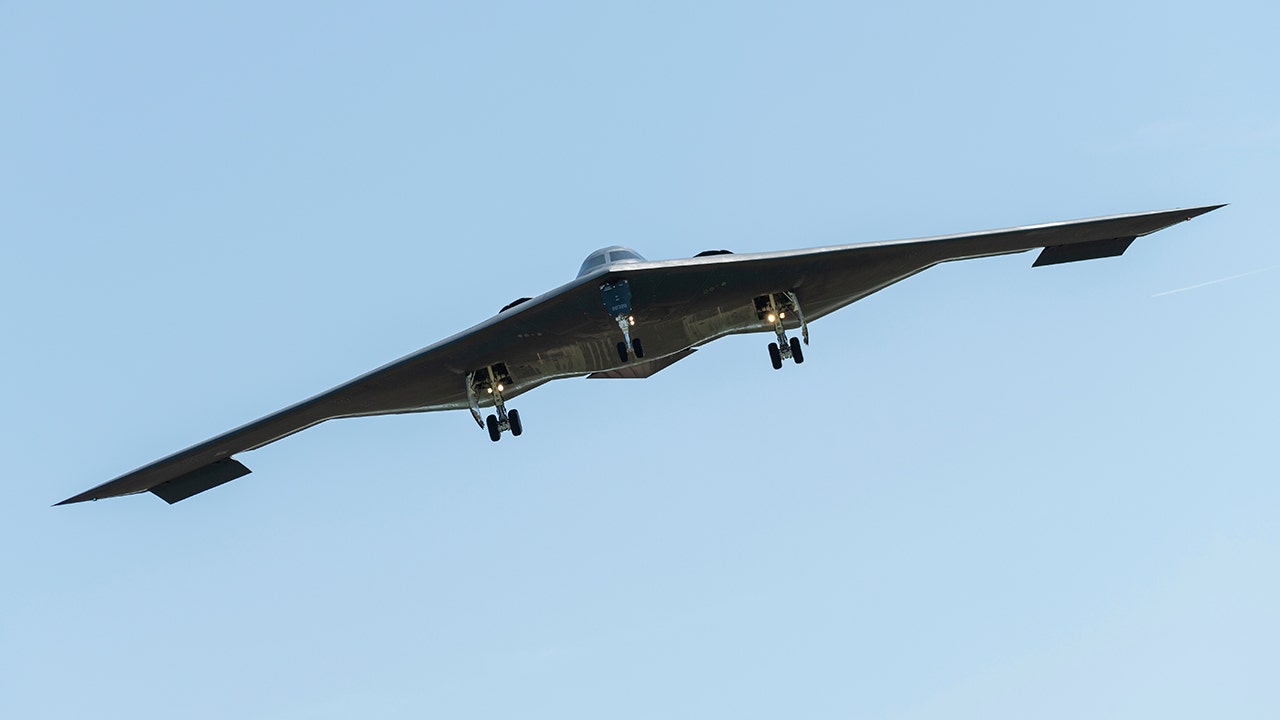Tesla finally did the damn thing. The company launched its hotly anticipated robotaxi service in Austin, Texas, on Sunday, June 22nd — and we’re now starting to see some of the first reactions roll in.
Technology
Robotic dog helps those facing mental health and cognitive challenges
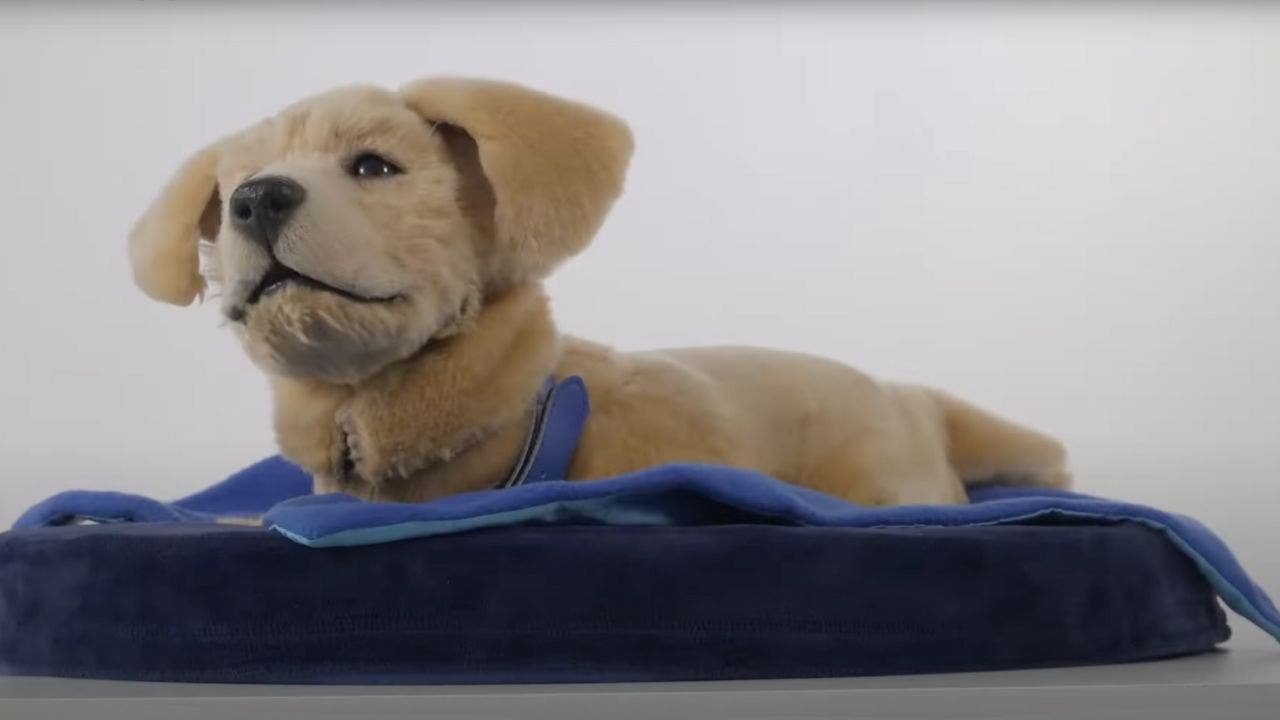
U.S. robotics company Tombot has introduced Jennie, an innovative AI-powered robotic pet designed to provide comfort and companionship to those facing cognitive health challenges.
This groundbreaking creation is set to transform the lives of millions struggling with dementia, mild cognitive impairment and various mental health issues.
AI-powered robotic dog. (Tombot)
The birth of Jennie
Jennie’s inception stems from a personal tragedy experienced by Tombot CEO Tom Stevens. When his mother, Nancy, was diagnosed with Alzheimer’s, the family had to make the heart-wrenching decision to rehome her beloved dog, Golden Bear.
I’M GIVING AWAY THE LATEST & GREATEST AIRPODS PRO 2
This difficult choice led to increased loneliness and depression for Nancy. Recognizing the widespread need for a solution, Stevens founded Tombot with the mission to create a robotic companion that could provide the emotional benefits of pet ownership without the associated challenges.
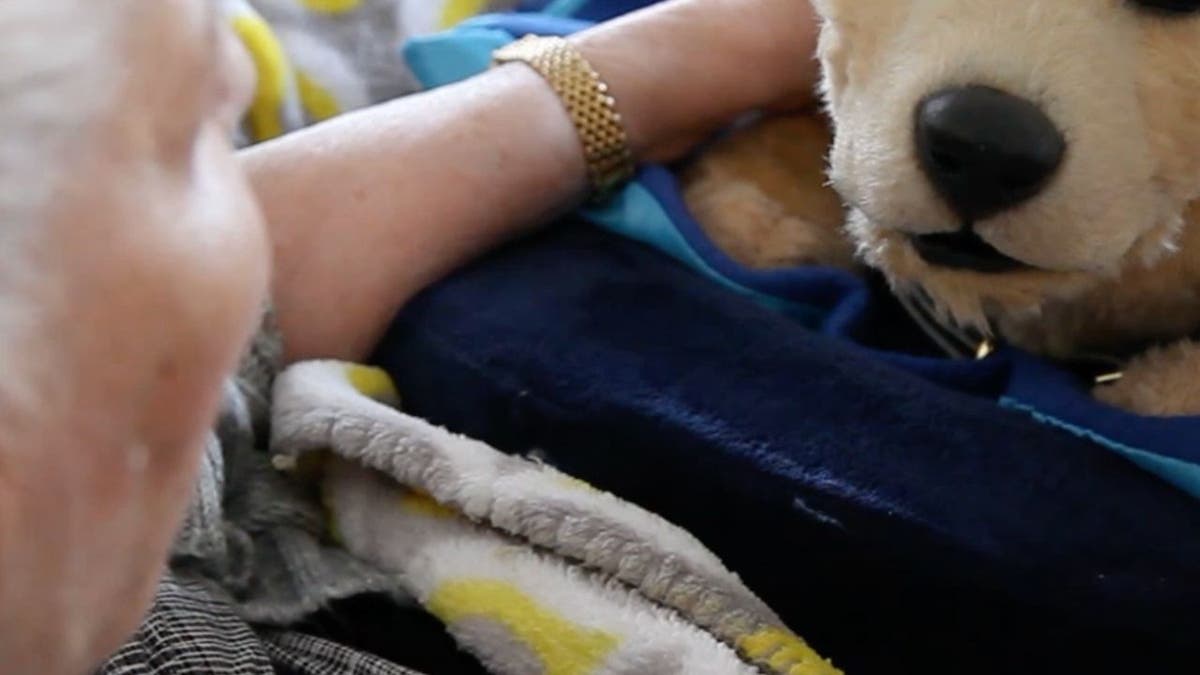
AI-powered robotic dog with its companion. (Tombot)
5 NEW INNOVATIONS TO HELP SENIORS LIVE BETTER
Cutting-edge design and technology
Jennie’s lifelike appearance is the result of a collaboration with Jim Henson’s Creature Shop, renowned for creating the iconic Muppets. This artistic partnership has resulted in a hyperrealistic Labrador retriever puppy that captures the essence of a real dog.
Jennie features an impressive array of interactive technologies designed to create a lifelike and engaging companion experience. The robotic puppy features sophisticated interactive touch sensors strategically placed across its body, allowing it to respond authentically to human touch and interaction. When a user pets or touches Jennie, the advanced sensor technology enables nuanced, realistic reactions that mimic a real puppy’s behavior.
Voice command recognition technology allows Jennie to understand and respond to verbal instructions, creating an incredibly realistic puppy-like interaction. Users can give commands like “speak” or “sit,” and Jennie will react accordingly, providing a sense of genuine companionship and responsiveness.
WHAT IS ARTIFICIAL INTELLIGENCE (AI)?
To enhance its authenticity, Jennie’s sounds are meticulously crafted from actual recordings of 8- to 10-week-old Labrador puppies. These genuine puppy sounds create an incredibly immersive experience, making interactions feel remarkably true to life and emotionally engaging.
The robotic puppy is engineered for practical, everyday use with an impressive all-day battery life. Users can simply plug Jennie in overnight, similar to charging a smartphone, ensuring the companion is ready for full daily interaction without interruption.
A dedicated smartphone app provides users with extensive customization options. Through this digital interface, owners can name their Jennie, personalize its functionality and track daily interactions, adding another layer of personal connection to the robotic pet experience.
Tombot is committed to continuous improvement, offering regular software updates that will introduce new behaviors and commands. This approach ensures that Jennie remains dynamic and evolving, with the potential for expanding capabilities over time through simple app-based upgrades.
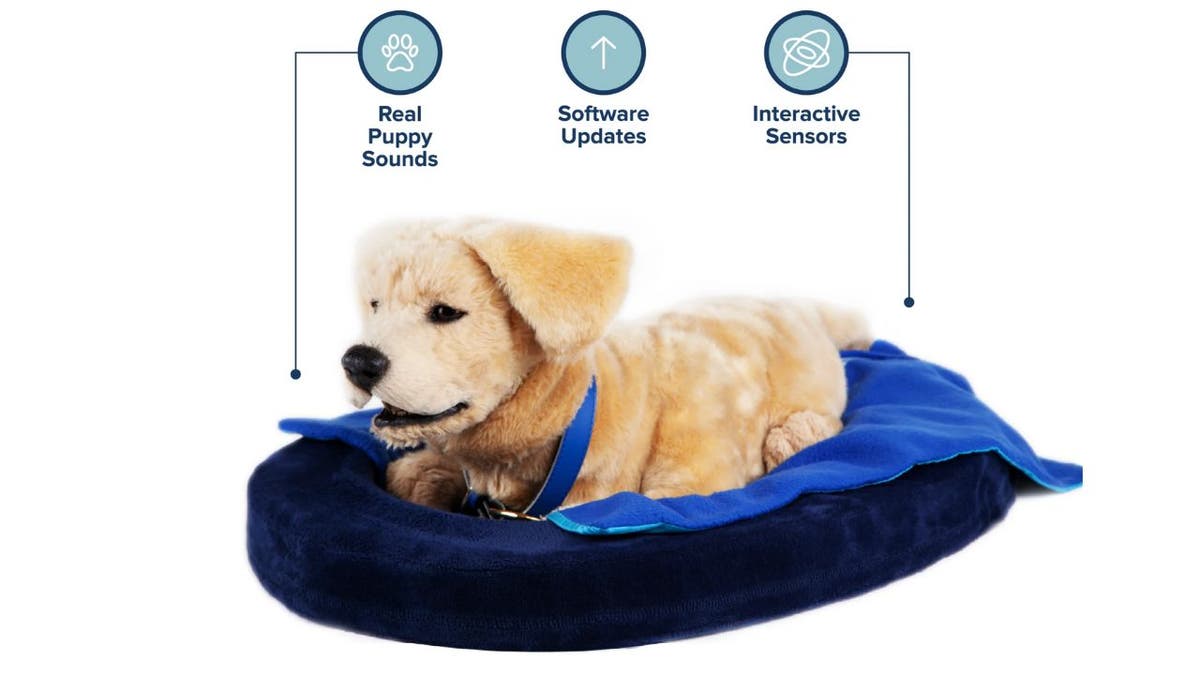
AI-powered robotic dog specs. (Tombot)
BEST CREDIT CARDS FOR SENIORS AND RETIREES 2025
The impact of Jennie on mental health
Jennie was specifically designed to address the needs of individuals facing various health challenges:
Dementia and mild cognitive impairment: Peer-reviewed studies suggest that robotic animals can help ease symptoms such as hallucinations and aggressive outbursts.
Anxiety and depression: Jennie provides comfort and support for those struggling with mental health issues.
Loneliness: The robotic puppy offers companionship to seniors and others experiencing isolation.
Stress: Jennie can help alleviate psychological stress in long-term hospital patients.
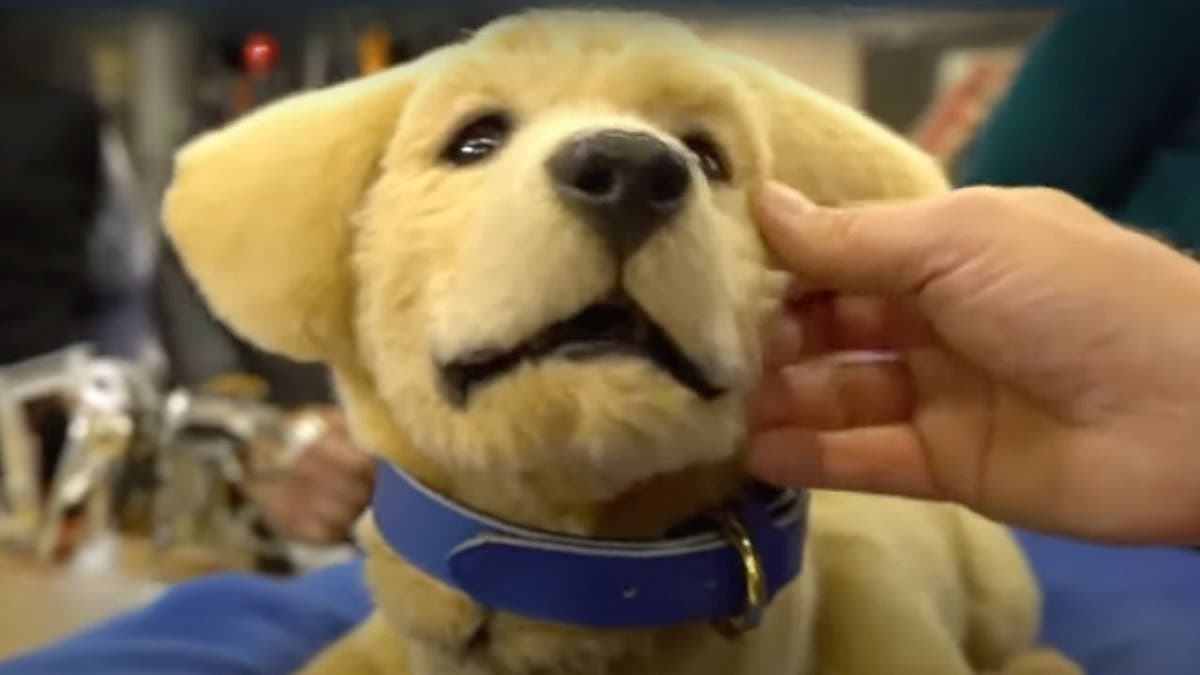
AI-powered robotic dog. (Tombot)
BEST TECH FOR SENIORS
Future prospects
Tombot aims to register Jennie as an FDA-regulated medical device, potentially expanding its use in hospitals and care facilities. With over 7,500 preorders from homes, hospitals and care centers, Jennie is poised to make a significant impact in the field of robotic companionship.
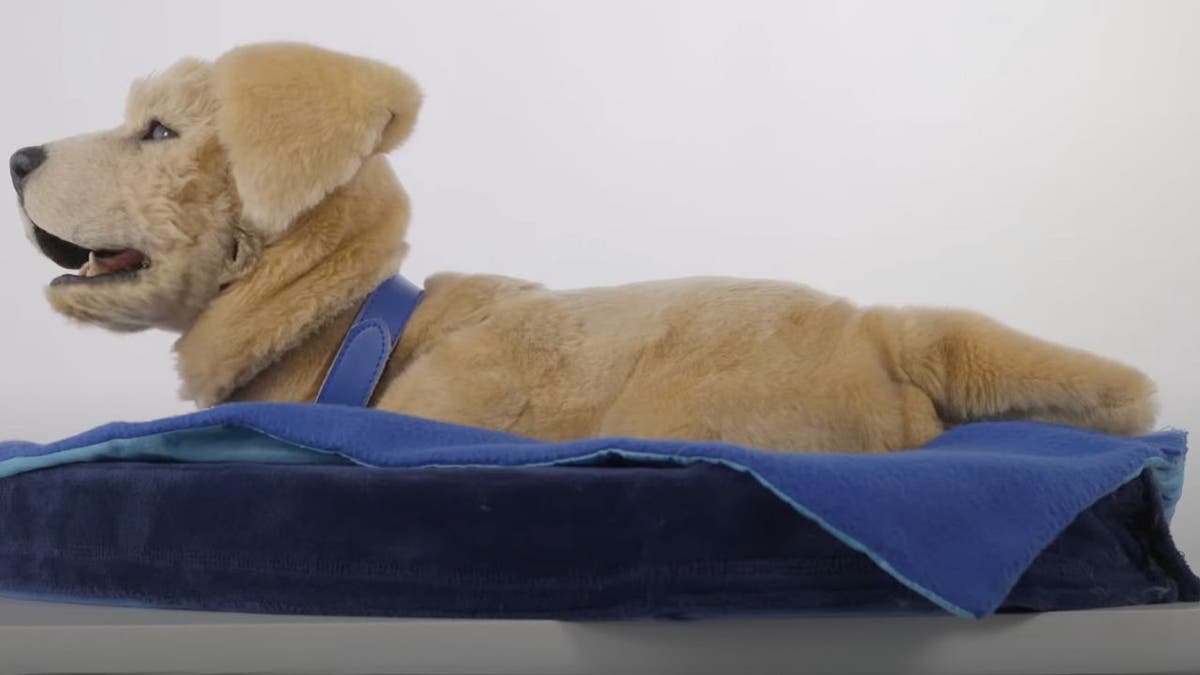
AI-powered robotic dog. (Tombot)
A cost-effective alternative
Priced at $449, Jennie offers an affordable and accessible alternative to live pet ownership. This is particularly beneficial for those who cannot safely or practically care for a real animal due to health or living conditions. To join the Jennie waitlist, prospective owners can click the link on Tombot’s website, and the company will directly contact you with specific pricing details and shipping availability as the next production batch approaches.
SUBSCRIBE TO KURT’S YOUTUBE CHANNEL FOR QUICK VIDEO TIPS ON HOW TO WORK ALL OF YOUR TECH DEVICES

Companion with AI-powered robotic dog with its companion. (Tombot)
Kurt’s key takeaways
Jennie represents a significant step forward in addressing the emotional and companionship needs of those facing cognitive and mental health challenges. By combining cutting-edge technology with a compassionate approach, Tombot has created a solution that could improve the quality of life for millions of people worldwide.
Do you think AI robotic companions like Jennie could provide genuine comfort and emotional support in your life or the life of a loved one? Why or why not? Let us know what you think by writing us at Cyberguy.com/Contact
For more of my tech tips and security alerts, subscribe to my free CyberGuy Report Newsletter by heading to Cyberguy.com/Newsletter
Ask Kurt a question or let us know what stories you’d like us to cover.
Follow Kurt on his social channels:
Answers to the most-asked CyberGuy questions:
New from Kurt:
Copyright 2025 CyberGuy.com. All rights reserved.

Technology
Tesla’s robotaxi is live: here are some of the first reactions

But first, we have to get a few important caveats out of the way. Tellingly, the service is not open to the general public, nor is it completely “unsupervised,” as Elon Musk once promised. The vehicles will include Tesla-employed “safety monitors” in the front passenger seat who can react to a dangerous situation by hitting a kill switch. Other autonomous vehicle operators would place safety monitors in the driver or passenger seats, but typically only during the testing phase. Tesla is unique in its use of safety monitors during commercial service.
The rides are limited to a geofenced area of the city that has been thoroughly mapped by the company. And in some cases, Tesla is using chase cars and remote drivers as additional backup. (Some vehicles have been spotted without chase vehicles.)
The service is invite only at launch, according to Tesla’s website. A number of pro-Tesla influencers have received invites, which should raise questions about how unbiased these first critical reactions will be. Tesla hasn’t said when the service will be available to the general public.
The limited trial includes 10-20 Model Y vehicles with “Robotaxi” branding on the side. The fully autonomous Cybercab that was first revealed last year won’t be available until 2026 at the earliest. The service operates in a small, relatively safe area of Austin from 6AM to 12AM, avoiding bad weather, highways, airports, and complex intersections.
Despite those hours, the robotaxi service seems to have gotten off to a slow start. Several invitees had yet to receive the robotaxi app by 1PM ET on Sunday. Sawyer Merritt, who posts pro-Tesla content on X, said he saw 30 Waymo vehicles go by while waiting for Tesla’s robotaxi service to start. Musk posted at 1:12PM that the service would be available later that afternoon, adding that initial customers would pay a “flat fee” of $4.20 for rides — a weed joke with which Musk has a troubled history.
While riders waited, the company published a new robotaxi page to its website detailing a lot of the rules and guidelines of the service. Visitors are invited to sign up for updates about when Tesla’s robotaxi service may come to their area. (Musk has said there could be up to a thousand robotaxis on the road “in a few months.”)
After finally being granted access to the app, Merritt posted an image of the service area map, which appeared to cover a small area bordered by the Colorado River to the north, Highway 183 to the east, Highways 290 and 71 to the south, and Zilker Part to the west.
And then the rides began — and they appeared to be mostly uneventful. Several invitees livestreamed themselves summoning their first cars, interacting with the UI, and then arriving at their destination. Several videos lasted hours, as the invitees would conclude a trip and then hail another car immediately after. One tester, Bearded Tesla Guy, described the app’s interface as “basically Uber.” Many had some difficulty finding the pickup location of their waiting Tesla robotaxi.
“This is like Pokemon hunting,” one person on Herbert Ong’s livestream said, “but its robotaxi hunting.”
Once inside, the Tesla-employed safety monitor would ask the riders to show their robotaxi apps to prove their identities. Otherwise the safety monitors kept silent throughout the ride, despite riders trying to get them to talk. I’m assuming that Tesla will need to come up with some other way to identify their riders if they plan on removing the safety monitors from the passenger seat. Waymo, for example, asks customers to unlock their vehicle through the ridehail app.
The rear screen instructs the riders to fasten their seatbelts, and after pressing an animated “start ride” button, the vehicle gets underway. Riders can also start the ride from a similar button in the app. Since riders are registering for the robotaxi app using their preexisting Tesla profiles, they’re greeted with their preferred music apps on the rear screen with all their playlists and saved tracks.
The front display shows a visualization similar to consumer vehicles using Tesla’s Full Self-Driving feature — even though Musk had said the robotaxis are running on a special version of FSD that’s not available to the average Tesla owner. There are “pull over,” “stop in lane,” or “support” buttons on the center display. Another tester, Chuck Cook, said the visualization lacked some of the controls that a normal Tesla might have.
Pressing the support button places the rider in a queue as they wait for the remote operator to connect. On Cook’s livestream, it took approximately two minutes before an operator finally connected. “We appreciate you calling in,” the operator said (though the cellular connection was poor). “We’re here for any issues to support your ride.”
Throughout the various trips, the robotaxis encountered a bevy of normal situations, like U-turns, speed bumps, pedestrians, construction, and more. The vehicles maintained speeds of about 40 mph or slower. Common words to describe the ride was “smooth,” “great,” and “normal.” One tester said on X that they got the robotaxi to “mess up” in a way that required the remote operator to help out — though they declined to describe it as a disengagement.
Ashok Elluswamy, the head of the company’s self-driving team, posted a photo of several dozen people in a room with 10 large monitors on the wall showing live camera feeds from several vehicles. “Robotaxi launch party,” Elluswamy wrote.
Where Tesla goes from here is the real challenge. Musk has said he also wants to launch a robotaxi service in California, where the regulatory process is a lot more complex than Texas. And even though he has said he wants to take things slow, he also claims that Tesla will have over a thousand driverless vehicles on the road “within a few months.”
Meanwhile, Waymo is operating more than 1,500 driverless vehicles in San Francisco, Los Angeles, Phoenix, and Austin — with plans to expand to Atlanta, Miami, and Washington, DC in the near future. The Alphabet-owned company has said it will grow its fleet to 2,000 vehicles by next year.
Technology
Suicide bomber strikes Syrian church near Damascus during mass

NEWYou can now listen to Fox News articles!
A suicide bomber in Syria on Sunday detonated himself inside a church filled with people, state television and a war monitor said.
The explosion in Dweil’a in the outskirts of Damascus took place as people were praying inside the Mar Elias Church. Britain-based war monitor the Syrian Observatory for Human Rights says there were 30 people wounded and killed, but the exact numbers are unclear. Some local media reported that children were among the casualties.
THEY WANT AMERICANS DEAD, TOO — THE THREAT FROM IRAN AND ITS PROXIES
A suicide bomber exploded at the Mar Elias Church on the outskirts of Damascus, Syria, on June 22, 2025. (BAKR ALKASEM/AFP via Getty Images)
The attack was the first of its kind in Syria in years, and comes as Damascus under its de facto Islamist rule is trying to win the support of minorities. As President Ahmad al-Sharaa struggles to exert authority across the country, there have been concerns about the presence of sleeper cells of extremist groups in the war-torn country.
WE CAN’T IGNORE THE DANGER FROM THOSE WHO WANT TO ‘GLOBALIZE THE INTIFADA.’ WE NEED TO TAKE ACTION

A suicide bomber attacks a church on the outskirts of Damascus, Syria, on June 22, 2025. (BAKR ALKASEM/AFP via Getty Images)
Security forces and first-responders rushed to the church. An eyewitness said in a video widely circulated online that the attacker came in and started to shoot at the people there before detonating an explosive vest he was wearing.
Technology
Weird-shaped notebooks make me want to write again

Andru Marino is an audio and video producer at The Verge. “I make videos on our YouTube / TikTok / Instagram channels, and have produced our podcasts like Vergecast, Decoder, and Why’d You Push That Button?” He also keeps a lot of notes, and his latest favorite places to keep them are the Triangle and Sidekick notebooks. I asked him about them.
Where did you first hear about these notebooks?
I don’t really remember when I first saw the Triangle Notebook. It was probably an Instagram ad. I had kept a link to the notebook’s website in a browser tab on my phone for a few months and kept thinking about it.
When did you buy it, and what went into the decision?
I bought it in April, and what really attracted me was how weird it was. Why does the notebook need to be a triangle? Oh, it opens up into a square! Wow, I love that! The main reason I use paper is to doodle, and I thought this shape would inspire me to doodle differently.
And then I saw this company also made another notebook called the Sidekick that basically looks like an L when opened, so it is angled alongside your computer keyboard. That was so wacky to me. So I bought that one too.
What do you like about them?
This seems more like an art experiment than anything. I love objects that make you rethink how they are used. I typically have Post-it notes or a spiral notebook on my desk so I can write something down or doodle during a meeting. The Sidekick doesn’t take up a ton of space on my desk either opened or closed.
The Triangle Notebook is actually great for using on your lap or other unconventional surfaces, as it is pretty sturdy and lays flat on its spine.
Both notebooks also encourage me to use my handwriting more, which was a New Year’s resolution I had.
Is there anything about them that you dislike, or that you think could be improved?
I am not entirely sure if it makes sense to take notes on an L-shaped piece of paper, but that is just what makes the Sidekick different.
The Triangle Notebook could have a few more pages in it. It is nicely bound and sort of expensive ($33), so I would like to get more use out of it. Also it is so long! I don’t know where to store it.
And the pages don’t tear out very easily. I’d love to give someone a note on a weird-shaped piece of paper.
Who would you recommend it to?
I’d recommend the Sidekick to an artist who wants to doodle during meetings — which is why I bought this. But I can also see it working for someone who draws on a tablet and wants to briefly write down some notes about what they are working on.
I don’t know who I would recommend the Triangle Notebook to besides someone who likes weird objects. I’d love to know if someone feels like they do their best work on a triangle-shaped notebook.
You started this by saying you hoped these notebooks would inspire you to doodle differently. Have they?
So far, no. My notes look the same mess as ever, but it has encouraged me to doodle more and write more, so that makes me happy.

$33
Triangle-shaped notebook that opens into a square.


$24
Notebook shaped like an “L” to wrap around your keyboard.
-

 Arizona4 days ago
Arizona4 days agoSuspect in Arizona Rangers' death killed by Missouri troopers
-

 Education1 week ago
Education1 week agoOpinion | Artificial intelligence, Trump and the Future: 13 Gen Z-ers Discuss
-

 Technology1 week ago
Technology1 week agoGoogle is shutting down Android Instant Apps over ‘low’ usage
-

 News1 week ago
News1 week agoAt Least 4 Dead and 4 Missing in West Virginia Flash Flooding
-

 Culture1 week ago
Culture1 week agoSlow and Steady, Kay Ryan’s “Turtle” Poem Will Win Your Heart
-

 Movie Reviews1 week ago
Movie Reviews1 week agoTitan: The OceanGate Disaster Movie Review: A sobering deep dive into ambition, negligence, and tragedy
-

 News1 week ago
News1 week ago‘No Kings’ demonstrators to gather across Greater Cincinnati in opposition to Trump
-

 News1 week ago
News1 week agoOakland County sheriff urging vigilance after shootings of 2 Minnesota lawmakers



